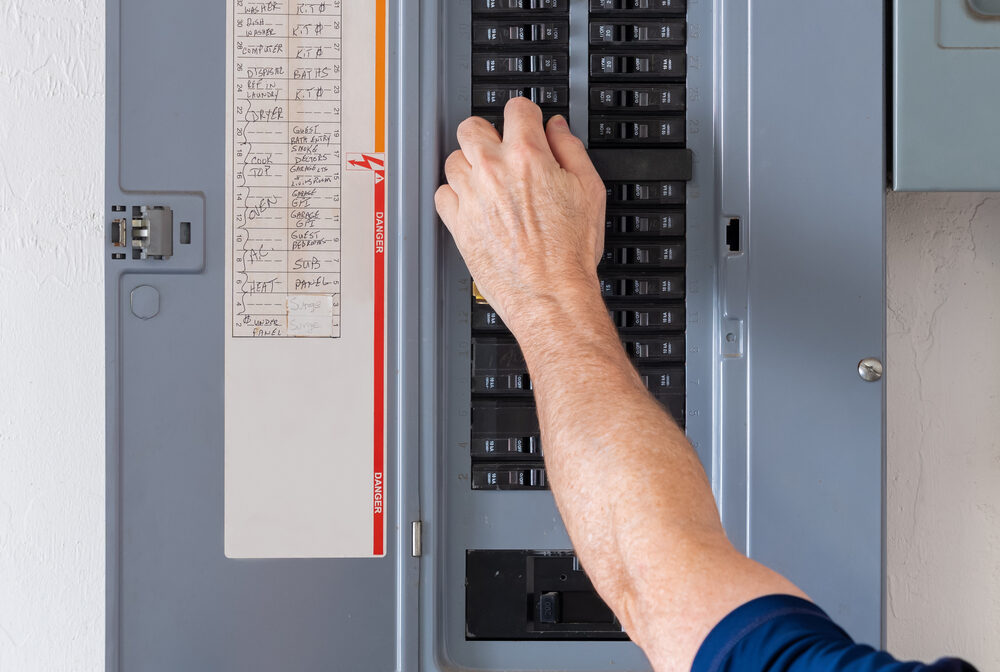Ever glanced at your electrical panel and noticed rust or a mysterious greenish build-up? That’s corrosion for you – sneaky, silent, but potentially harmful to the heart of your home’s electric network. If the idea of jumping into this problem seems overwhelming, trust me, you’re in good company. But fear not! Removing corrosion from an electrical panel isn’t just doable; it’s necessary for maintaining safety and functionality in our homes. This guide will walk you through identifying different types of corrosion that might be affecting your panels and offer practical solutions to clean them up efficiently.
Understanding Corrosion in Electrical Panels
What is Corrosion?
Corrosion is a sneaky little devil that loves to wreak havoc on our precious electrical panels. This is what happens when metal parts slowly start to break down, usually because they’re reacting with stuff in the air or water around them.
When it comes to electrical panels, metal parts like bus bars, breakers, and wiring aren’t immune to the effects of corrosion. So, what you end up with is not just a drop in performance but also the risk of running into some pretty serious safety issues. Not cool, corrosion. Not cool at all.
Types of Corrosion Affecting Electrical Panels
Now, let’s talk about the different types of corrosion that can affect our electrical panels. First up, we have galvanic corrosion. This happens when two dissimilar metals are in electrical contact with each other, and there’s some moisture present.
The less noble metal (the anode) corrodes faster than it would on its own, while the more noble metal (the cathode) corrodes slower. It’s like a weird, corrosive dance party.
But wait, there’s more. We also have to watch out for atmospheric corrosion, which occurs when metal is exposed to oxygen and moisture for an extended period. And let’s not forget about fretting corrosion, where the protective oxide layer gets rubbed away, exposing the metal underneath to corrosion.
Why Corrosion is Detrimental to Electronics
So, why is corrosion such a big deal in electrical panels? Well, for starters, it can lead to increased resistance in connections. This causes overheating and potential fire hazards. No one wants a barbecue in their electrical panel, right?
Corrosion can also cause intermittent or complete failure of components, resulting in equipment downtime and costly repairs. Plus, it can compromise the integrity of the panel enclosure, allowing moisture and contaminants to sneak in and cause even more problems.
In short, corrosion is a real pain in the panel. It’s like that annoying neighbor who always finds a way to ruin your day. But don’t worry, we’ll talk about how to kick corrosion to the curb in just a bit.
Step-by-Step Guide to Removing Corrosion
Safety First: Preparing to Clean the Panel
Before we dive into the nitty-gritty of removing corrosion from your electrical panel, let’s talk safety. First and foremost, make sure the power is completely disconnected. We don’t want any shocking surprises, do we?
Next, gear up with some protective gloves, safety glasses, and a dust mask. You don’t want to get up close and personal with corrosive substances and debris. And while you’re at it, cover the floor beneath the panel with a drop cloth or newspapers to catch any loose material.
Using Natural Cleaners for Mild Corrosion
For mild cases of corrosion, you can whip up a cleaning solution using ingredients you probably already have in your kitchen. Mix a paste of baking soda and water, or grab some white vinegar or lemon juice.
Apply the cleaner to the corroded areas with a soft-bristled brush or lint-free cloth. Let it sit for a few minutes, then gently scrub to remove the corrosion. Wipe away the cleaner and loosened corrosion with a damp cloth, and make sure to dry the area thoroughly.
Tackling Severe Corrosion with Chemical Solutions
For more severe cases of corrosion, you might need to bring out the big guns. And by big guns, we mean commercial electrical contact cleaners or corrosion removers specifically designed for use on electrical components.
Apply the solution according to the manufacturer’s instructions, using a brush or cloth. Be careful not to get the cleaner on any plastic parts, as it may cause damage. Once you’re done, rinse the area with a clean, damp cloth and dry it completely.
So, if you ever find yourself staring down some serious corrosion issues, remember it’s a smart move to get in touch with a professional electrician. They can assess the extent of the damage and recommend the best course of action.
Preventing Future Corrosion in Your Electrical Panel
Importance of Regular Maintenance
Now that we’ve kicked corrosion to the curb, let’s talk about how to keep it from coming back. Staying on top of regular check-ups for your electrical panel goes a long way in keeping rust at bay.
Schedule annual inspections with a qualified electrician to identify and address any signs of corrosion early on. And in between inspections, keep the area around the panel clean and free of moisture, dust, and debris.
Choosing the Right Protective Coatings
After cleaning and drying the electrical panel components, it’s time to give them some extra protection. Apply a protective coating, like a conformal coating, dielectric grease, or rust inhibitor specifically designed for use on electrical connections.
These coatings form a barrier against moisture and contaminants, helping to prevent future corrosion. It’s like giving your electrical panel a superhero cape to fight off the evil forces of corrosion.
Managing Humidity and Water Exposure
Humidity and water exposure are corrosion’s best friends. To keep them at bay, control humidity levels around the electrical panel. In humid climates, consider installing a dehumidifier or using moisture-absorbing products like silica gel packs.
Make sure the panel is properly sealed and located away from potential water sources, such as leaks or flooding. If you live in an area prone to flooding, consider relocating the panel to a higher, safer location.
And there you have it, folks. Your guide to understanding, removing, and preventing corrosion in your electrical panel. Remember, a little maintenance goes a long way in keeping your panel happy, healthy, and corrosion-free.
Corrosion in electrical panels is a big no-no, but with the right steps, you can kick it to the curb. Start by turning off power and suiting up for safety. Use kitchen staples for mild cases or commercial cleaners for tougher jobs. Don’t forget regular maintenance and protective coatings to keep that corrosion at bay.
Conclusion
So there we have it – demystifying the process of how to remove corrosion from an electrical panel. It wasn’t so scary after all, right? Just like any other maintenance task around the house, dealing with corroded panels is about staying vigilant and acting swiftly before small issues escalate into larger problems. Whether you’re grabbing baking soda for a DIY cleanup or calling in a professional electrician for more severe cases, what matters most is taking that first step towards ensuring the health of your home’s electronic heartbeat remains strong.
Remember those movies painting AI as humanity’s biggest threat? Well, much like those exaggerated tales, letting myths about electrical maintenance intimidate us only holds back progress—both within our homes’ walls and beyond them.
The tools are in our hands (sometimes literally) to safeguard against potential dangers lurking behind those metal doors—be it through regular cleaning schedules or embracing new technologies designed specifically for such tasks. Let’s lean into these opportunities without hesitation because maintaining a secure environment starts with understanding exactly what needs fixing—and now you know just how to tackle one key piece!








